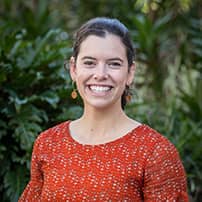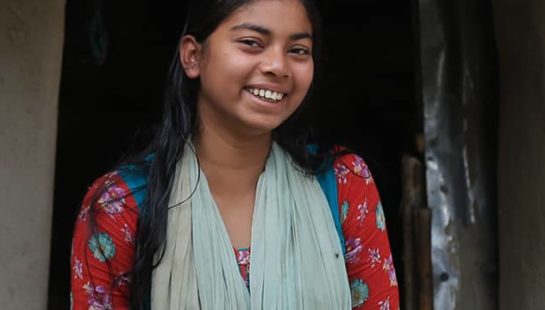In the last year, we’ve seen ash-covered houses in Tonga, drought-impacted fields across the Horn of Africa, and the destructive impact of Typhoon Odette (Rai) as it crushed infrastructure across the Philippines. These events can leave us feeling helpless and asking some big questions—wondering why disasters happen and what, if anything, can be done to prevent them?
Are so-called ‘natural disasters’ really natural? Or are they an inevitable part of the human experience living in a broken world?
This question is a complex one that sits alongside questions like ‘what’s the meaning of life’ and ‘why do bad things happen to ‘good’ people?’
Thinking about ‘preventing disasters’ conjures up the helpless image of trying to stop a tsunami with a broom—which may keep some water off your doorstep but is futile in the face of rushing waters.
A better question is, how do we reduce the impact of disasters, particularly on communities already vulnerable due to poverty?
A better question is, how do we reduce the impact of disasters, particularly on communities already vulnerable due to poverty?
Disaster risk is assessed based on three components: hazards + exposure + vulnerability = disaster risk. If you change one component of the equation, the risk associated with the disaster is likely to change. It’s possible to get two similar hazards that have vastly different impacts, even in the same area.
Hazard
The type, frequency, and size of the hazard—an earthquake versus a storm—determines the impact the event will have; for example, crushed buildings compared to flash flooding.
Exposure
If a cyclone occurs in the middle of the ocean and doesn’t go near land, its impact will be less than a cyclone crossing over densely populated areas. Exposure relates to who (and what) is in the path of the hazard, and how protected they are. Understanding the likely levels of exposure can help aid workers better gauge the potential impacts of a disaster.
Vulnerability
This question of protection feeds into the final and most human component: vulnerability. People (and assets) who are most vulnerable are likely to be the most impacted by disasters. For example, safe zones and evacuation areas may not be suitably designed for those with a disability or accessible to the elderly, leaving these groups exposed.
Also, those living in poverty are less likely to be able to pre-stock food and necessary items in preparation for a flood season, and the dwellings they live in might not provide adequate protection in the event of a disaster.
These three components determine the various impacts disasters can have on communities—and help aid workers better assess how they can help. A hazard by itself isn’t a disaster—it’s only a disaster once people and the built and natural environment they rely on are impacted. And the greater the vulnerability of those people, the greater the risk of catastrophic consequences.
Can We Prevent ‘Natural’ Disasters?
So, we return to the question—can we prevent disasters? Realistically, no. But can we reduce the impact disasters have on vulnerable communities? Yes. When we work together as a community—both leaders and citizens—to protect vulnerable communities from hazards, when we respond to our neighbour when they need us, and when we assist in recovery efforts to improve a community’s resilience for the future.
In the last year, Baptist World Aid’s Christian Partners supported over 25 disaster-related projects. Our local Partners in Haiti, for instance, provided food, hygiene kits and medical supplies to earthquake-affected communities, while counselling services and agricultural resources helped Tongan communities re-establish their lives after the volcano
But the picture for a more disaster-resilient world is bigger than just us. Baptist World Aid is part of Australian and global alliances that amplify our efforts and increase our impact. Together, we can actively address the impact of environmental crises so that our global neighbours can be safe for generations to come. Together, we must invest in disaster risk reduction, so communities are prepared if disaster strikes. And together, we can change the view of disasters, and see a better world for all.
Would you like to partner with us for a more disaster-resilient world? Give now to our Disaster Action Fund and help communities respond before, during and after a disaster.



 Melissa Lipsett,
Melissa Lipsett,